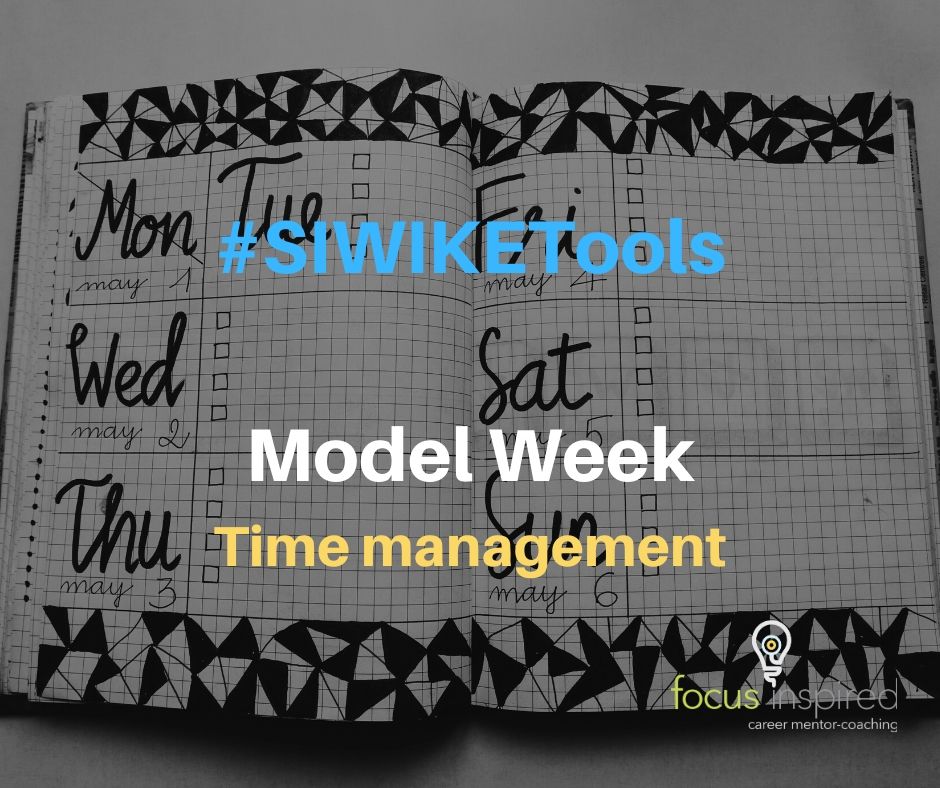
SIWIKE Tools: Model week
“Show me your calendar and I’ll show you your priorities“ -Quint Struder
When it comes to time management, I am very reliant on my calendar. Now while the calendar doesn’t necessarily work for everyone, it does work for the majority of people. Another calendar quote comes to mind: “what gets scheduled gets done”. -Michael Hyatt
When folks are looking to get their time and priorities under control, I recommend them to create a “model week”. Here’s how you set up a model calendar.
- Start with a weekly calendar (here’s a Model Week template that you can use)
- Write down the earliest time that you typically wake up. Continue riding hourly times until when you go to bed
- Fill in the calendar day by day based on all of your committed priorities.
- If you are a student: start with your timetable. Make sure to add some extra time for studying and assignments.
- If you are working: put your typical work hours. If you don’t have standard work hours put an approximation.
- If you are neither: but whatever commitments do you have that rely on others.
- Be sure to include transit time
- Think about whether you want to leverage this time for other purposes. If you drive then you can listen to an audiobook or a podcast. If you take transit, you could read. In either case, you could make a phone call to a loved one or for other purposes. Or you could take a nap and recover from the day.
- Put in some non-negotiable time for personal and professional development
- Put in time blocks based on your priorities
- “Me-time” for recovery and self-care
- Significant other, family and friends
- Volunteer
- Part-time work, side-hustle
- Social media and procrastination time
- Slack time for life‘s little surprises
- Any other priorities
- At least 1/2 hour for reflection time to consider how well you did against your model week
During your model week reflection time, recall how you spent your week.
- Did you spend the time on what you wanted? Don’t be too concerned on whether you spent the time minute-by-minute or hour-by-hour, Rather what are the overall percentages are somewhat aligned.
- Is there something you wanted to do and weren’t able to do at all?
- Is there something not in your plan that you ended up spending way too much time on?
- Are there any times where you can’t recall where you spent your time?
As you reflect on these questions, think about what plans you can make to address the gaps. If you’re spending time exactly on your priorities and you’re good to go for the next week. If there are improvements to be made, think about the instance where you decided to do the other (unwanted or unplanned) activity instead of your priority: what will you do this coming week in order to make sure that you focus on the actual priority?
The model week could be a quick and dirty version. It doesn’t have to be scheduled by the half hour, 15 minute interval. You could just do an approximation. Perhaps doing an iterative approach where you have a time frame. Fill-in your model week to as much detail as you can within a 15-minute block. If you take longer than 15-minutes, do your best to follow that week for the week and block off another 15-minutes to refine it and make it more detailed. Then keep going until you’re happy with it.
Also make a note to allocate some time to update your model week whenever you have new commitments, new transitions in your life, career.
You’ll find that even by doing this exercise your time management will be improved. Just by starting to measure how you use your time. Your brain will automatically start reminding you where you should be spending your time.
How has a model week benefited getting your priorities done? How else have you been effective in managing your time?
Follow:Share: